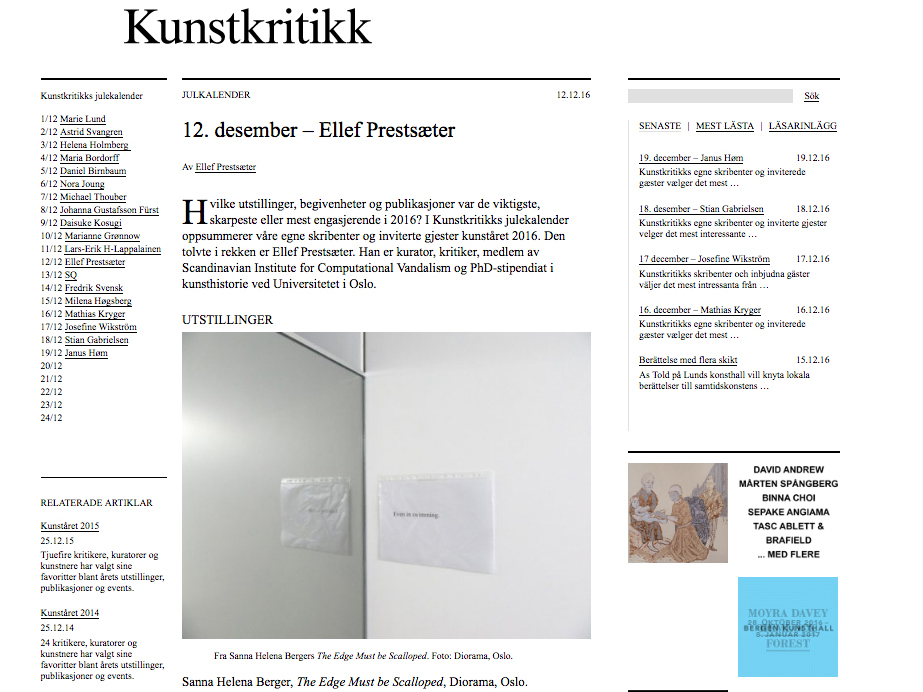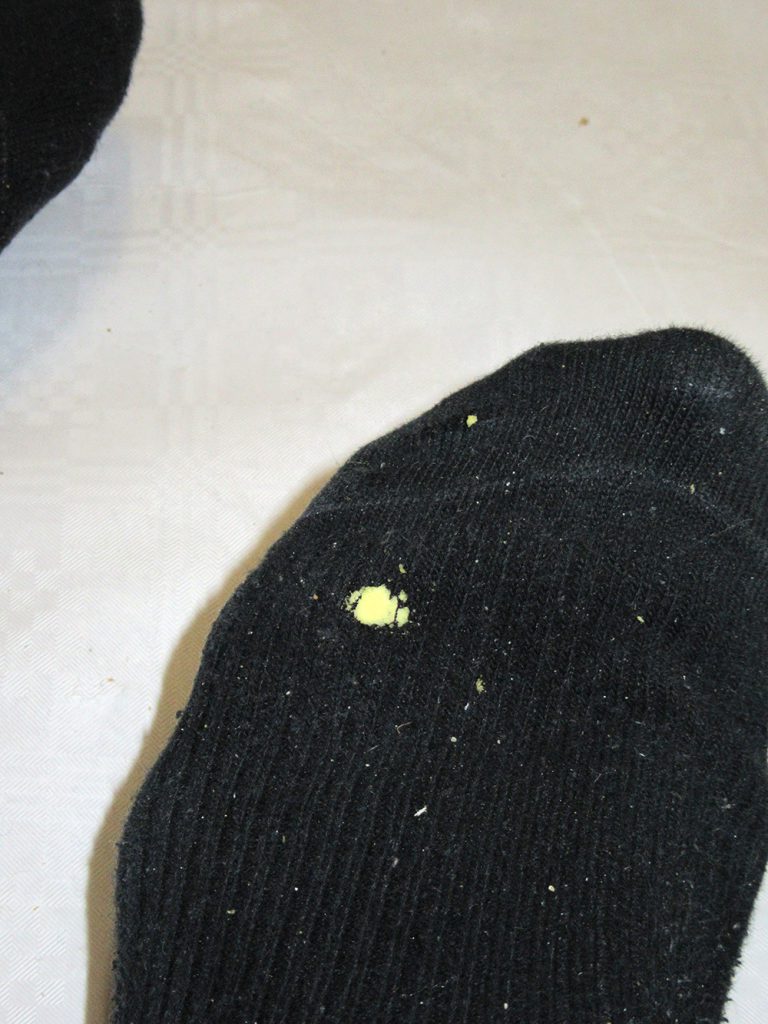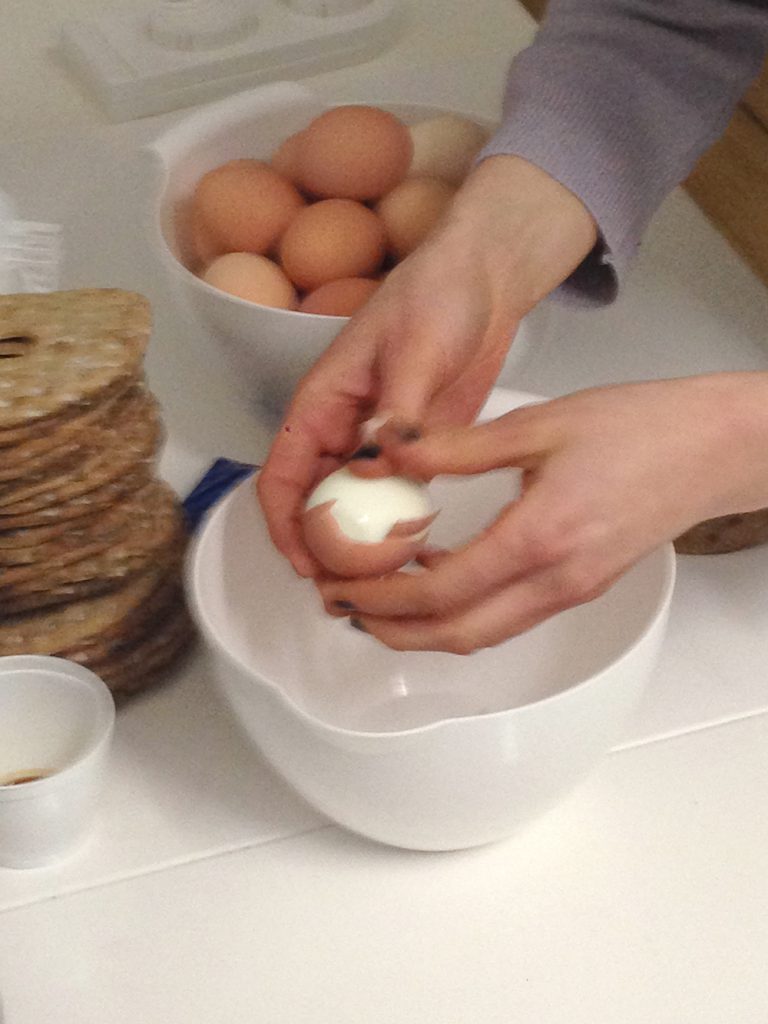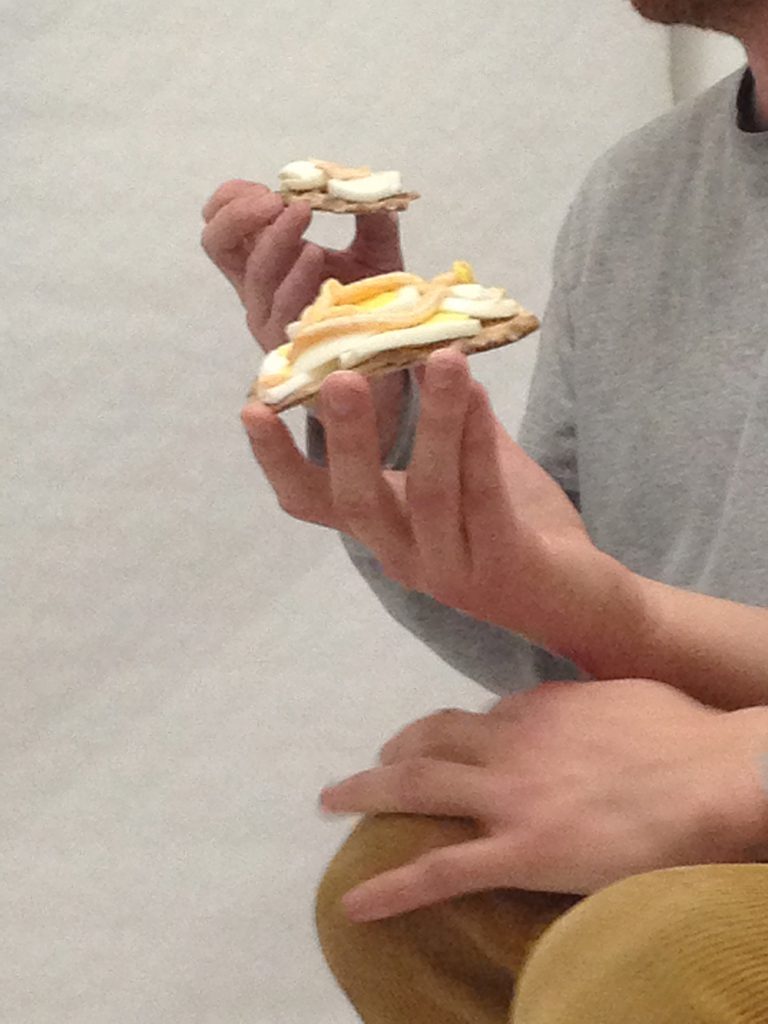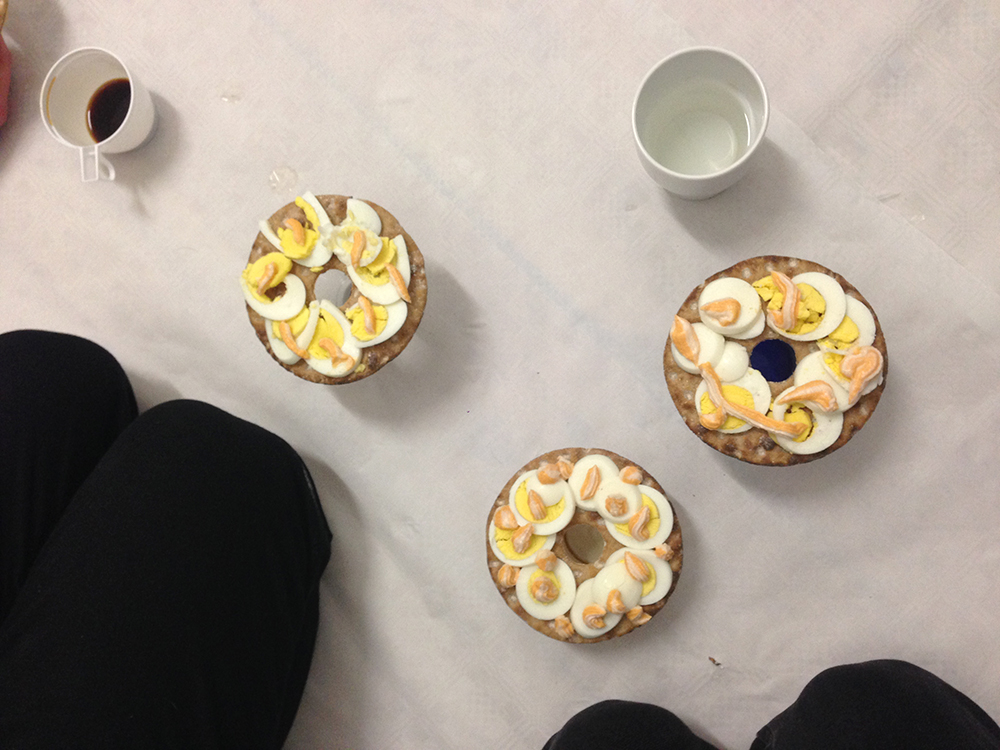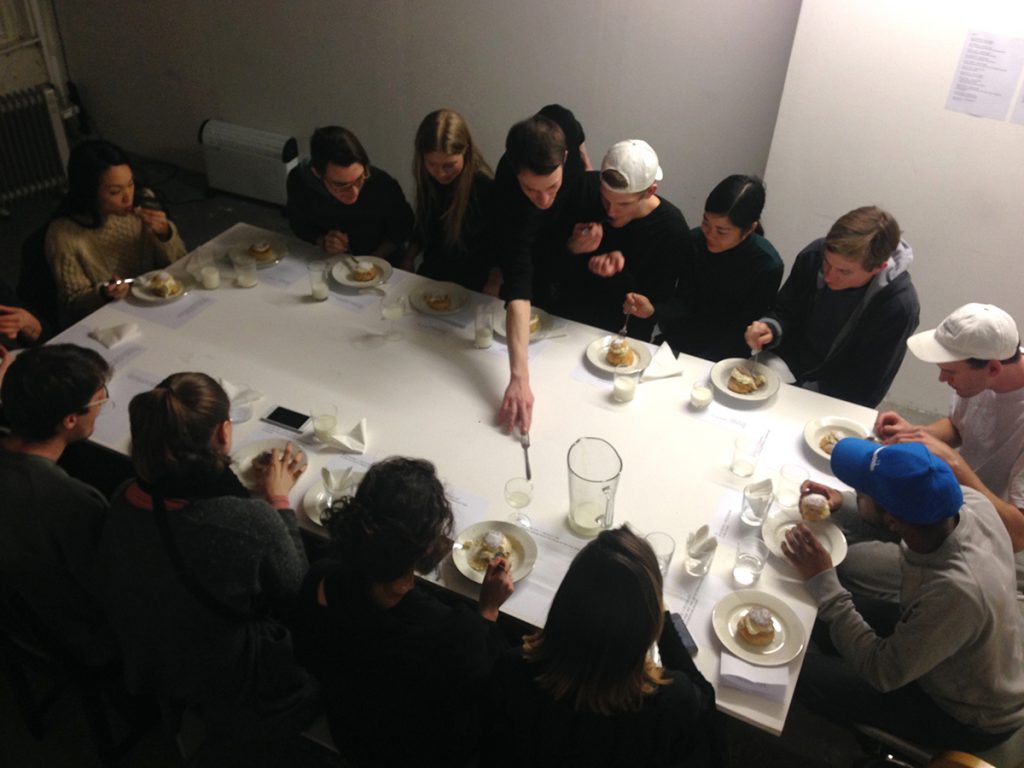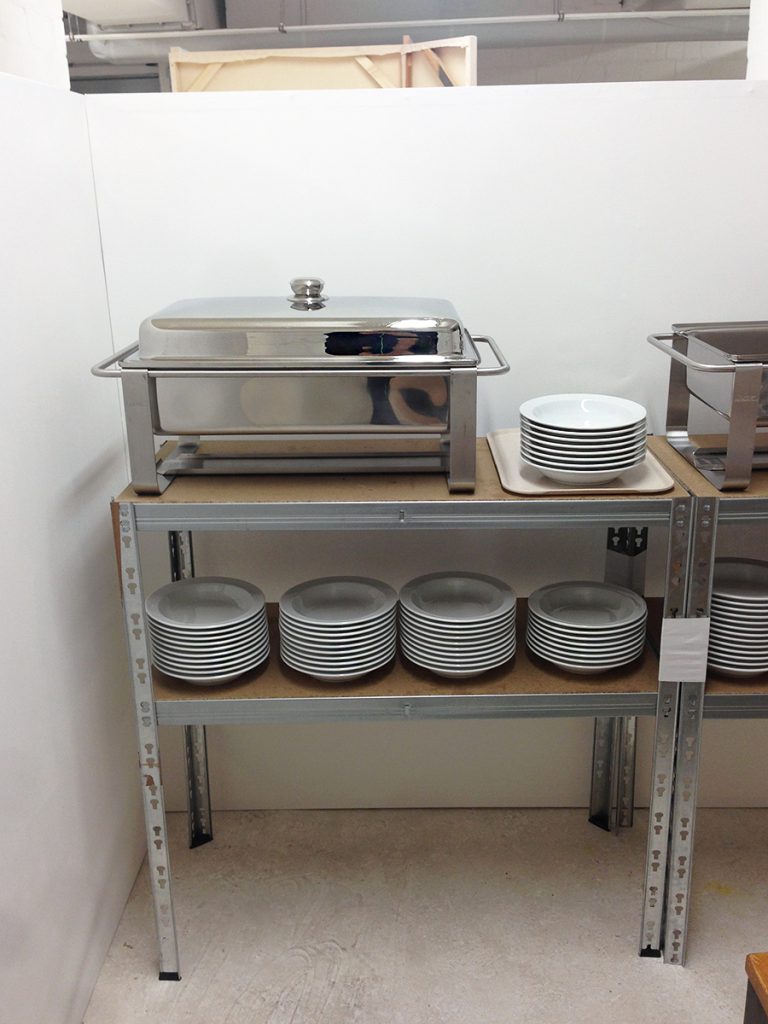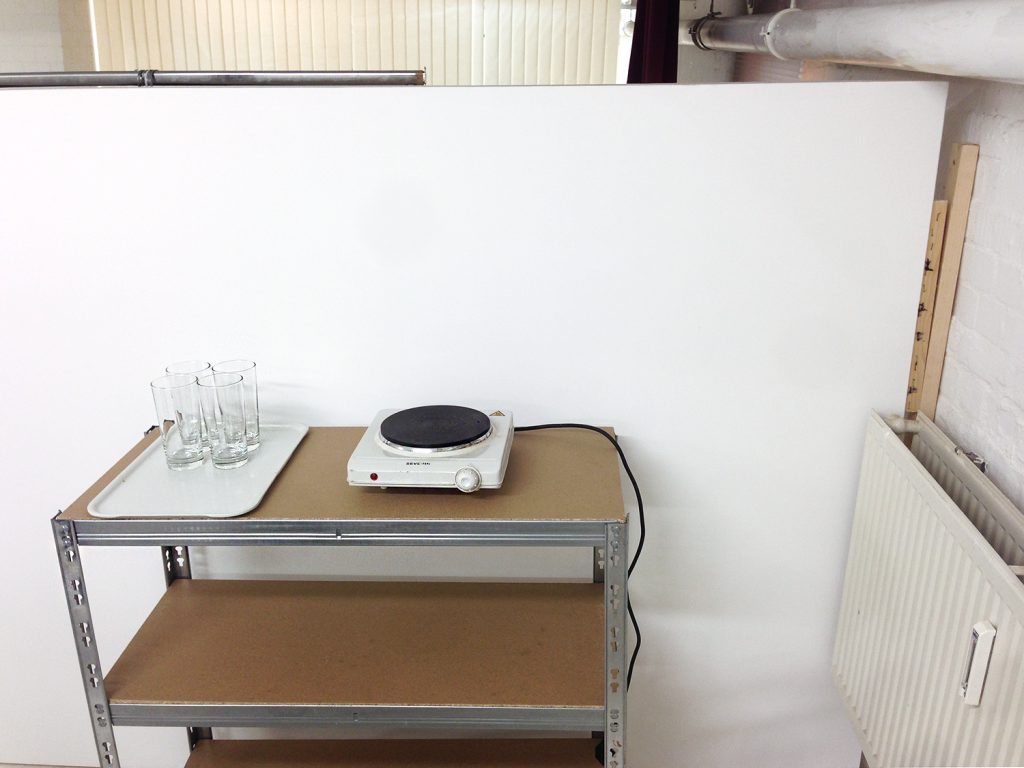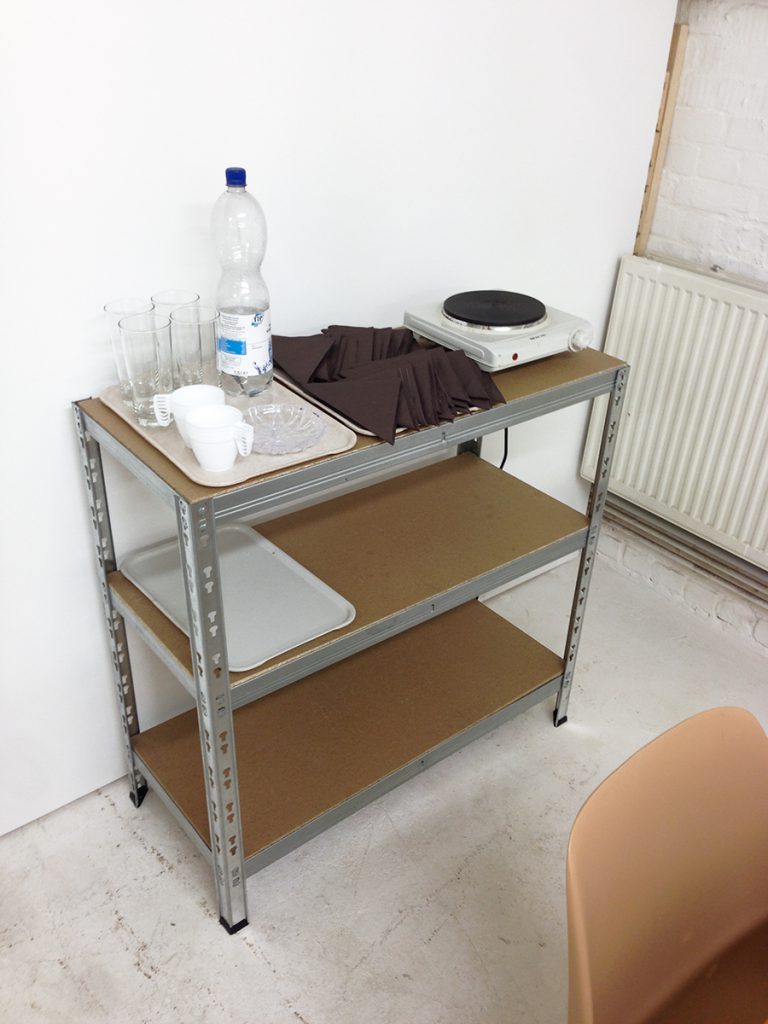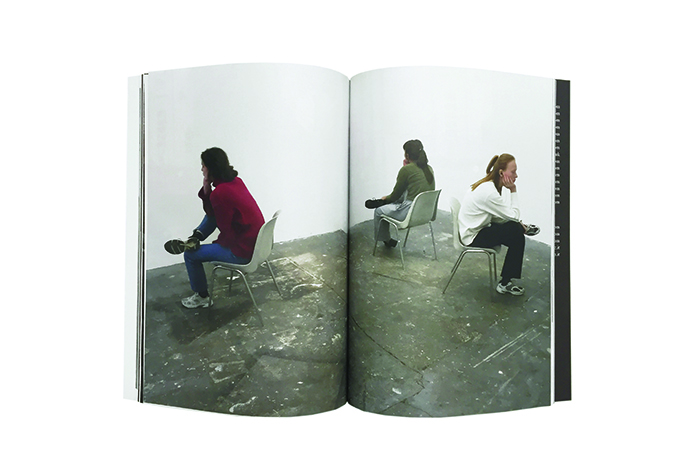



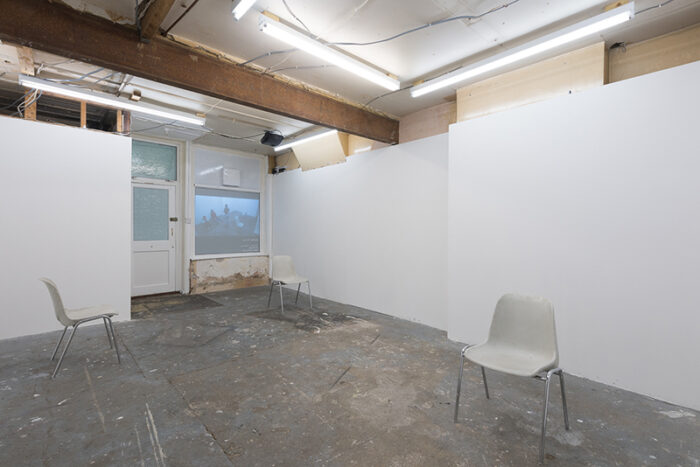

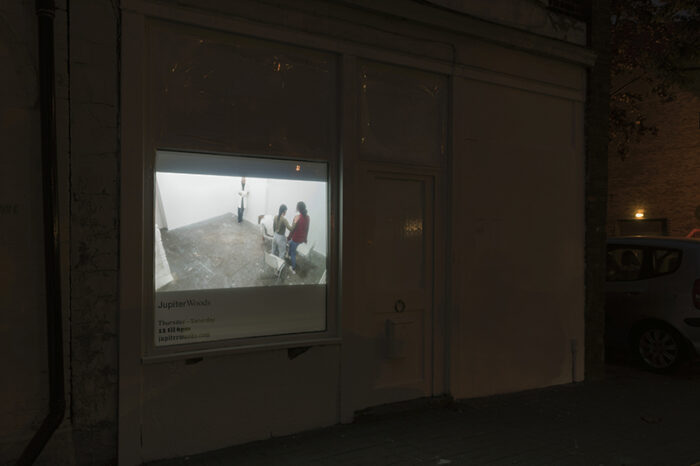

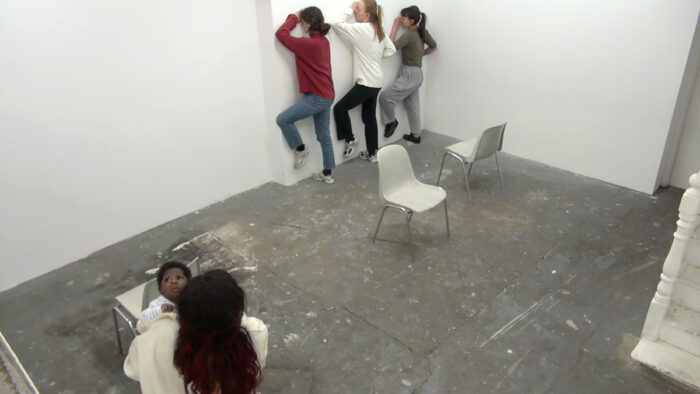
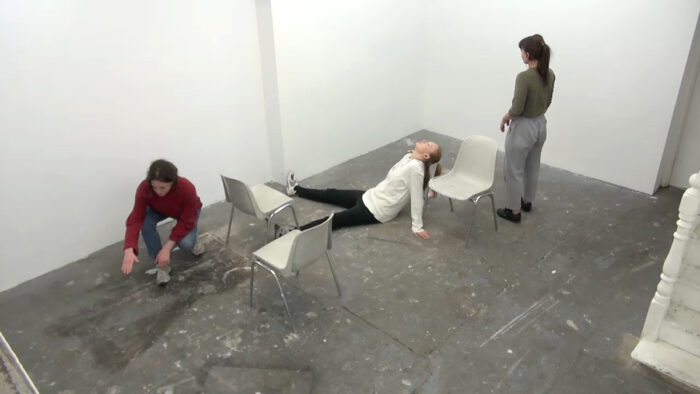
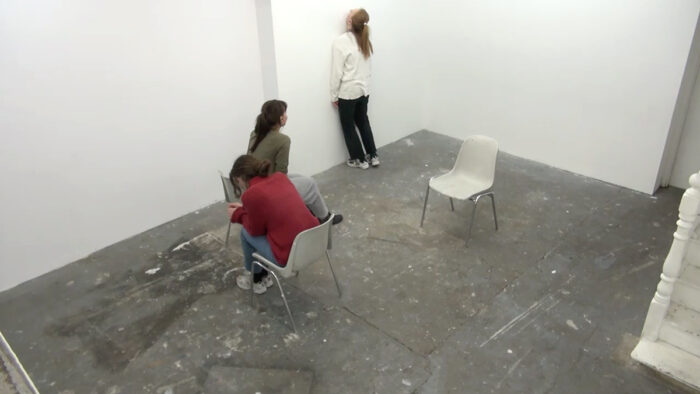
Sanna Helena Berger
A Range
12 – 29 October, 2015
The wait is the anticipation. The initial know-how to-do in a familiar situation, heavy in form and stilted in interaction.
But here its also warm and with soft underlay.
This as much as the action is the consequence of the idea –
A gathering.
The covering – the coat – the ticket to participate – a passive interaction – the action that release a reaction.
You are the deciding factor – the break from the intermittent behaviour.
Here the waiting room is clear and obvious, almost comical.
There, the stark and empty room, too, is a waiting room when not in use. The wait is the anticipation, again.
The 5 part range waits to be released, it is determined by you and the choice of your covering.
A range; arranged, of everyday movements when performed within their natural environment but sculptural in form when taken out of context, then the scene varies. Here the scenarios play out but we begin at home.
The walkings through from street, the white, the view obstructed, to waiting room, clear and literal to domestic areas, incidentally appropriate, to room of emphasised stark action, ah, the art!?
A seemingly mundane posture is elevated in another milieu.
The waiting room behaviour without the environment.
The motion taken out of the everyday scenario; a value change.
Here you come in. You are crucial to every part of the scenario.
The initial question wether what is inside shows outside? How participation can be a passive action? Does the arial view of one body define the distinction between performer and spectator? Subject or object of interaction? There can be no neutral.
Swedish artist Sanna Helena Berger resided in Jupiter Woods throughout October 2015 as its eighth artist-in-residence, employing the house as a temporary home and studio. An installation developed and launched during her residency was laid out between the main gallery space and the back room, creating two dissimilar environments with a shared purpose: to facilitate the act of waiting. The title ‘A Range’ enveloped the project as a whole and referred to Sanna’s ongoing research into a variety of everyday postures and mundane movements, which appear self-evident if applied within their natural habitat, yet become distinctly sculptural when taken out of their familiar context.
The visitor was guided to enter the installation through Jupiter Woods’ back doorway, walking into what seemed like a typical, slightly corporate waiting area. Consequently, by receiving a numbered piece of paper from the cloakroom assistant, the visitor joined a queue, inevitably displaying the mannerism peculiar to waiting rooms. At the same time in the bright white gallery, accessible via the kitchen, a group of three was likewise suspended in anticipation.
Once their number was called the visitor was invited to hand over her coat in exchange for a handmade garment; five of these hung in the back area, each embroidered with a phrase and a number: gesture neutral, arrange, to-do, medium, from scratch. Upon entering the gallery space this piece of clothing would trigger a specific range of movements performed by the body of three. A sequence no longer than five minutes, composed of a series of extracted everyday gestures, disrupted the visitor and performers’ concurrent waiting room behaviour. This encounter was recorded and streamed as a projection visible from the outside of the gallery, providing a further level of participation through passive spectatorship.
